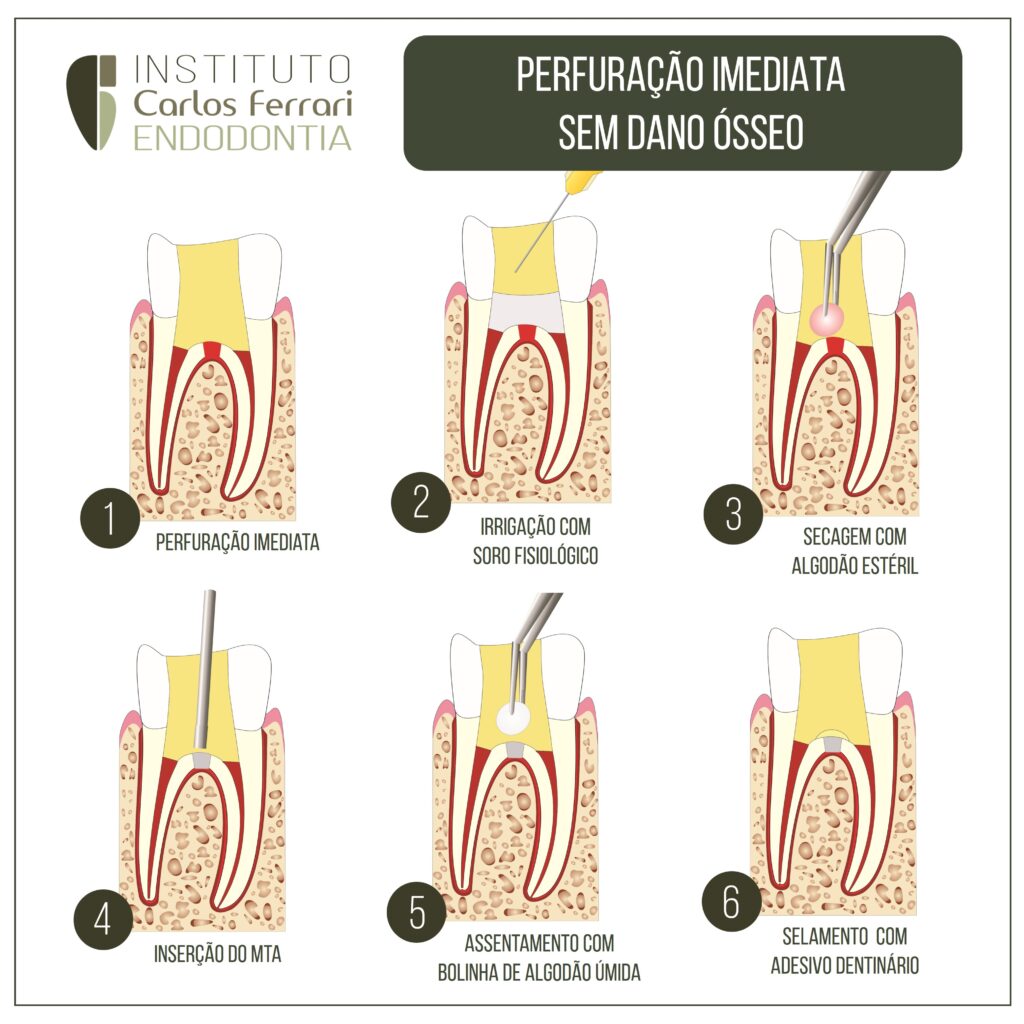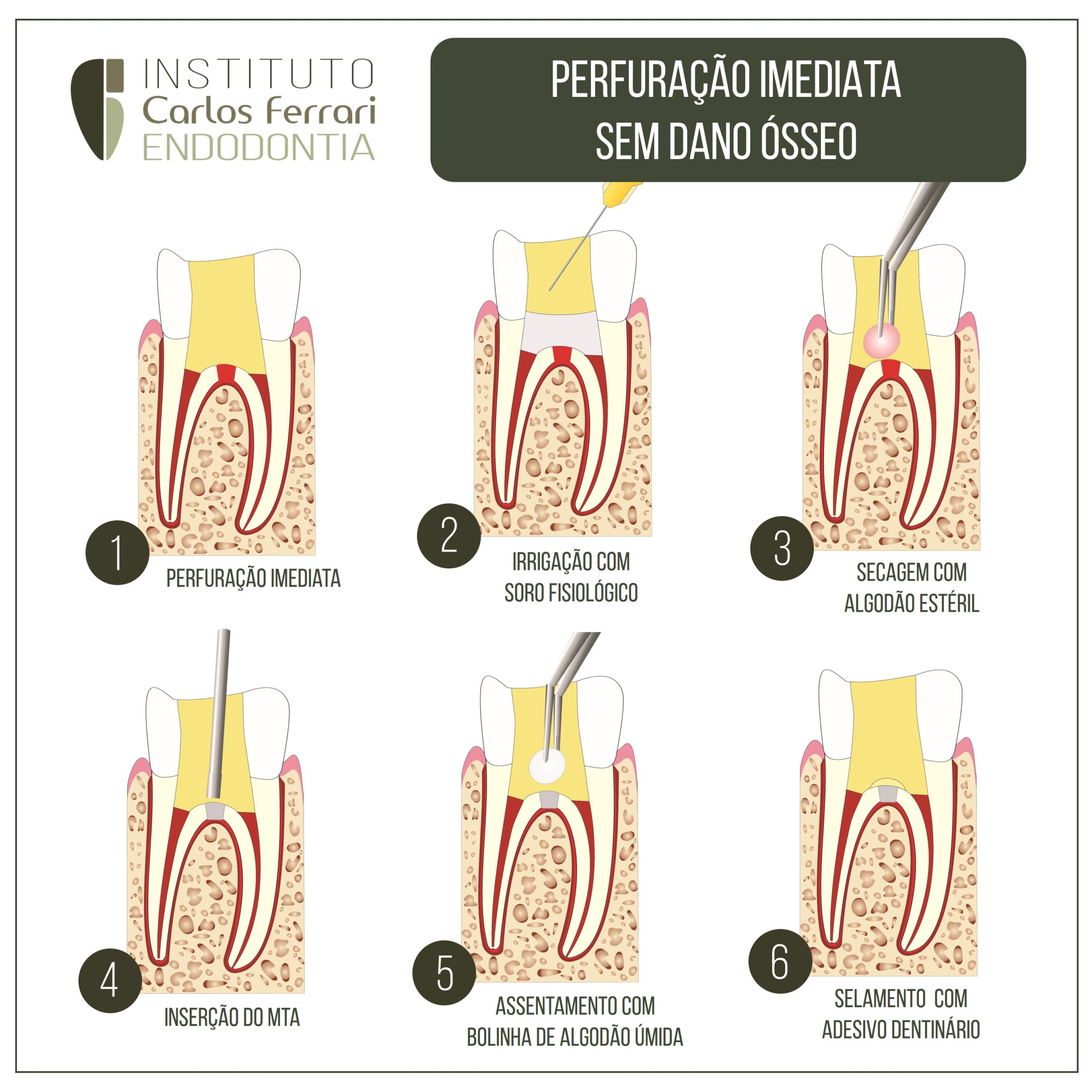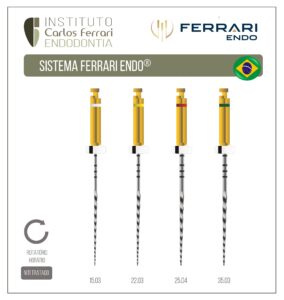
Root perforation without bone damage. What should I do? Has a perforation occurred during access surgery and is there no further bone damage? The following is a guide to immediate endodontic perforation in small perforations, without removal of bone tissue, treated with bioceramic repair cement or MTA.
In: Zanini. APPLICATION OF BIODENTINE, MTA AND CALCIUM HYDROXIDE IN DIRECT PULP CAPPING.
- Introduction
In 1989 Stanley discovered more extensive regenerative capacities of the pulp
than had previously been assumed. He suggested preserving the tooth's pulp tissue in
various treatments unless in the presence of a diagnosis of irreversible pulpitis.
For some time, pulpotomy was considered the best treatment for exposed
pulp, because it was thought that regeneration of the pulp, once exposed, was impossible.
The aim of vital pulp therapy is to preserve the pulp tissue by removing contaminated
tissue and promoting the formation of a mineralized tissue barrier, bridging
dentin .
The dental pulp has a natural potential for tissue regeneration, which leads to the
formation of reparative dentin. It has been well documented that the dental pulp has
the ability to form a hard tissue barrier following the application of a
direct pulp capping or pulpotomy treatment.
During reparative dentinogenesis, at the site of exposure, the original odontoblasts are
destroyed and replaced by new differentiated odontoblast-like cells.
This process of pulp tissue regeneration involves the migration of stem cells to
the injured site and subsequent aproliferation and differentiation into
odontoblast-like cells.
Maintaining pulp vitality upon pulp exposure is one of the greatest challenges for a
dentist. Pulp tissue exposure to the external environment can occur due to iatrogenic
causes, via instrumentation, caries or dental trauma.
If pulp exposure occurs before complete caries removal, it is considered
caries exposure. If pulp exposure occurs during the preparation of a cavity
without caries, this is called mechanical exposure. Mechanical exposures are
usually a consequence of tooth preparation. Pulp exposure can result from
trauma when the coronal part of the tooth is impacted. In the event of exposure of the
vital pulp, direct pulp capping, pulpotomy or polpectomy may be the
treatment options.
The most widely used material for direct pulp capping was calcium hydroxide,
introduced to dentistry in 1921 and considered the "gold standard" of direct pulp capping materials
for several decades.
New materials have been tested over the last two decades as alternatives to calcium hydroxide
. Recently, mineral trioxide aggregate has become an alternative (5).
However, mineral trioxide aggregate is difficult to handle due to its long
setting time, cost and potential pigmentation of teeth and soft tissues (5,8).
To overcome some of these limitations, other bioactive tricalcium silicate cements
have been introduced to the market, such as Biodentine.
Root perforation without bone damage





